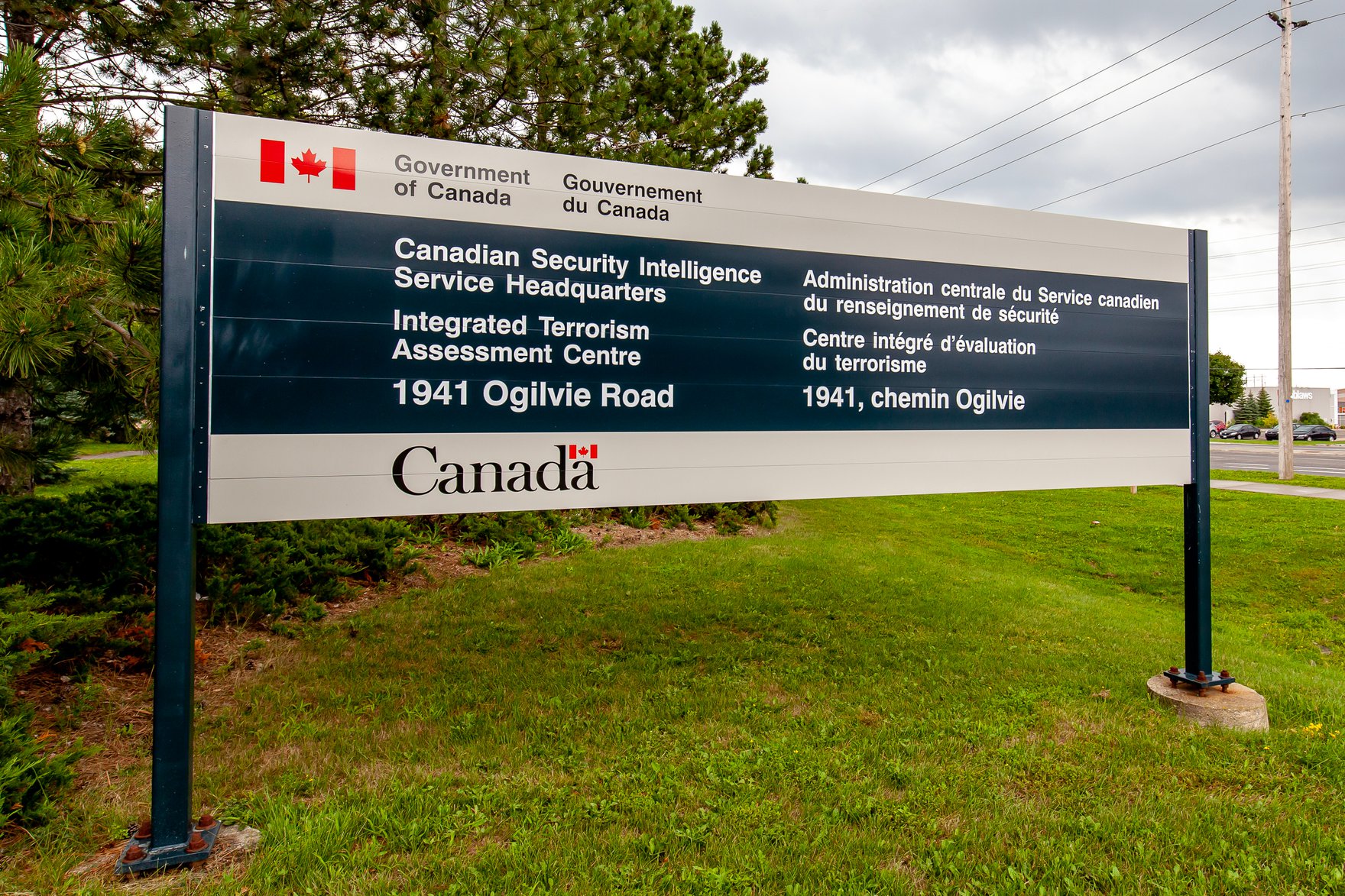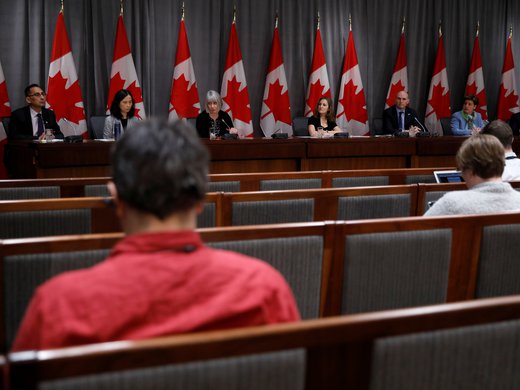Governance of the national security function in Canada has grown exponentially more significant and more complex in the two decades since the terrorist attacks of September 11, 2001. Despite major changes earlier in the century to the machinery of government in Ottawa, sweeping legislative overhauls and a series of public inquiries, there remain persistent organizational challenges. A holistic view of national security governance, one designed to find answers to the question of who is in charge, is seldom attempted and difficult to achieve.
The most important machinery of government changes occurred in the 2003–2004 period, as Ottawa adapted to a threat environment dominated by concerns about terrorism. In this period, the relatively small Department of the Solicitor General was transformed into the much larger Department of Public Safety. The public safety portfolio retained ministerial control over key elements of Canadian security — notably, the Canadian Security Intelligence Service (CSIS) and the Royal Canadian Mounted Police (RCMP) — but added a new agency as well: the Canada Border Services Agency (CBSA). The CBSA was formed out of a merger of elements of what was then Citizenship and Immigration, the Canadian Food Inspection Agency and the Canada Revenue Agency. A new threat intelligence fusion centre, designed to work with key Five Eyes partners, was formed, and housed within CSIS, initially titled the Integrated Threat Assessment Centre, later renamed the Integrated Terrorism Assessment Centre. In an attempt to enhance central coordination of the intelligence and security function, a more senior position was created within the Privy Council Office, that of the national security advisor (now the national security and intelligence advisor). To cap all this off, the then Liberal government, led by Paul Martin, issued a national security policy statement, Securing an Open Society: Canada’s National Security Policy, in April 2004 — the first of its kind.
The 2004 national security policy offered a basic definition of national security as involving threats that have the potential to undermine the state or society and that require a national response. It identified three core interests: protecting Canadians at home and abroad; ensuring Canada was not used as a base for attacks against its allies; and contributing to international security. National security governance was meant to ensure these interests. More recently, the Privy Council Office has updated the definition by adding economic security to the list of core interests.
Alongside machinery of government changes and early efforts to define national security principles and objectives, there have been important changes to national security law, exemplified by three major revisions between 2001 and 2019. December 2001 saw the passage of Canada’s first omnibus anti-terrorism legislation (Bill C-36). This legislation was further amplified and altered in 2015 by new anti-terrorism laws (Bill C-51). Bill C-51, in turn, prompted additional revisions as government control passed from the Conservative Party to the Liberal Party in 2015, and led to the introduction in 2017 of Bill C-59 (a new piece of national security framework legislation) and its royal assent two years later. Cumulatively, these legislative changes provided new mandates for national security agencies, redefined powers, outlined new criminal code offences, attempted to provide strong rights protections in line with the Canadian Charter of Rights and Freedoms, and ultimately added in a package of sweeping changes to national security review and oversight. Debates in Parliament over the merits of national security law brought wider public attention to national security practices. A unique exercise in public engagement and debate was attempted by the Liberal government in the fall of 2016 when it issued a rare national security green paper, Our Security, Our Rights, and called for public responses to a range of questions. What it heard back was significant public disquiet about security agency powers and a strong desire for greater independent review.
Three major judicial inquiries conducted between 2004 and 2010 also addressed national security governance issues. Dennis O’Connor’s inquiry into the Maher Arar affair found major problems in national security practices, and vague command and control, especially around intelligence sharing, in the RCMP. A follow-on inquiry by Frank Iacobucci into the detention of Canadians abroad, allegedly involved in terrorism, revealed governance gaps between CSIS and the then Department of Foreign Affairs. John Major, the commissioner of the Air India inquiry, which was mounted long after the events that led to the terrorist bombing of Air India Flight, 182 in 1985, expressed deep concern about the problems of cooperation between the RCMP and CSIS; his report advocated strengthening governance to deal with the so-called “intelligence to evidence” problem by giving decision-making authority to the national security advisor — a recommendation that was not acted upon.
All of these organizational changes, legislative overhauls and judicial inquiries ultimately failed to identify who, exactly, is in charge of national security. The reality is that there are many centres of authority for national security in Ottawa. The Canadian security and intelligence system remains relatively decentralized. Our key intelligence collection agencies, CSIS and the Communications Security Establishment (CSE), remain under the authority of different ministers, each presiding over very large and multi-purpose departments — Public Safety and National Defence respectively.
The Prime Minister might be considered a prime candidate for being “in charge” of national security but historically Canadian prime ministers have exercised only selective and discretionary authority and have displayed varying degrees of engagement with the national security system, depending on personality, prior experience, governance style, and competing political priorities.
Two examples illustrate how a de-centralised national security system struggles to produce governance cohesion. One involves an urgent effort to re-conceptualize economic security, which implicates many different actors in the federal government without there being any clear lead authority. A multi-agency task force has been created, led by Public Safety, which has focused some of its efforts on revisions to the Investment Canada Act, an Act overseen by a different department, Innovation, Science and Economic Development (ISED). Concerns have been raised internally that the Public Safety task force will not be able to properly advocate for protections for Canada’s defence industrial base or the Canadian Armed Forces. The Task Force’s work is ongoing, against a complex backdrop of competing interests and outlooks.
More striking still is the example of Canada’s Cyber Security Strategy. The original version, produced in 2010, described the nature of cyber threats and set out some general principles for response, but in place of leadership it offered only a coordinating role for Public Safety alongside distributed specific mandates for CSE, CSIS, Treasury Board Secretariat, Foreign Affairs and International Trade (now Global Affairs Canada), and the Department of National Defence/Canadian Armed Forces. The RCMP was to be given new resources to combat cyber crime, identifying yet another player in the mix. In a September 2017 report by Public Safety, “Horizontal Evaluation of Canada’s Cybersecurity Strategy,” the governance system was described as being “extremely fragmented.” An updated version of the strategy, produced in 2018, identified the need for stronger federal leadership on cyber security and promised a clear focal point (ultimately to become the Canadian Centre for Cyber Security) for federal government outreach to partners, but did not make any other governance changes and left intact the fragmented system of authority across many departments and agencies.
With its deeply embedded preference for a decentralised national security apparatus, Canada has been bucking a trend embraced by our key security partners in the Five Eyes intelligence alliance. The United States has long had its National Security Council at the heart of decision making in Washington. Following the recommendations of the 9/11 Commission, a new senior coordination officer role, the director of national intelligence, was created, principally to break down bureaucratic barriers to efficiency and information sharing in the intelligence system. Britain moved in 2010 to create its own National Security Council to ensure executive control over security and intelligence decision making. Australia made significant changes to its national security system in 2017 by creating an Office of National Intelligence under the prime minister, responding to an independent review of the Australian Intelligence Community. Canada, along with New Zealand, has stayed on the sidelines of such changes, continuing to rely on management of a decentralized system. Significant governance change has been stalled since 2004.
In the Canadian system, as it stands, there is no dedicated Cabinet committee on national security and intelligence. We have no equivalent of a US or UK National Security Council. Nor do we have anything approaching an “intelligence czar” or, as in the US case, a director of national intelligence. The national security and intelligence advisor faces a challenging task of coordination with no formal powers beyond “persuasion” and a closeness to the prime minister. We rely on a host of bureaucratic committees, from the deputy minister to the assistant deputy minister to the director general level across government, to operate an opaque and unaccountable trickle-down system to try to bring coherence to national security governance. In its first annual report, the National Security and Intelligence Committee of Parliamentarians came to the unsurprising conclusion that “Canadians do not appear to have a strong understanding of the individual mandates or activities of each of the organizations of the security and intelligence community, how they work together, or the role of the review bodies [emphasis added].”
Canadian national security muddles along with a decentralized system and a diffuse governance model, of unknown and unmeasured performance. This needs to change. The old system is no longer fit for purpose, when faced with an array of new threats to national security, particularly emanating from the digital space, which require clear leadership, rapid, coordinated, whole-of-government responses, and an ability on the part of the federal government to forge partnerships with other levels of government and with private sector entities. The new threat environment also places even greater emphasis on Canada’s ability to work closely with allies. An overly decentralized national security system is now a deep liability, whatever its previous merits might have been in creating specialised expertise and avoiding over-concentration of power.
A start can be made by examining best practices among our allies (are we really New Zealand?); by embracing a stronger and more visible leadership role by the prime minister; by reorganizing the Cabinet committee system to ensure there is dedicated attention to national security and intelligence issues; by ensuring that the national security and intelligence advisor has the power to perform a coordinating function, and by rethinking the multi-purpose role of the Department of Public Safety. That department, originally created in the image of its behemoth US counterpart, needs to be made more focused and nimble, with such functions as the prison system (Corrections) carved out to allow for a core national security mandate. This could be accompanied by long-overdue major reforms to the governance and mission of the RCMP.
After the passage of 17 years, and with major changes to the national security threat environment, it is time to rethink the governance of our national security system, before another crisis like the COVID-19 pandemic threatens to overwhelm us.





